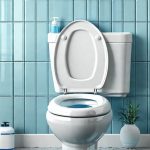Planning for large events – festivals, concerts, sporting competitions, conferences – often focuses on grand elements like stage setup, security protocols, and vendor coordination. However, a frequently overlooked but critically important aspect is adequate restroom facilities. Insufficient or poorly planned bathroom access can quickly derail an event’s success, leading to long queues, frustrated attendees, hygiene concerns, and even potential health risks. This isn’t merely about providing enough toilets; it’s about strategically anticipating demand, optimizing placement based on attendee flow, considering accessibility needs for all participants, and integrating smart solutions to manage usage effectively. A proactive approach to bathroom planning demonstrates respect for attendees and contributes significantly to a positive event experience.
The challenge lies in the dynamic nature of events. Attendee numbers fluctuate throughout the day, different demographics have varying needs (families with young children versus adults attending a rock concert will require different facilities), and unexpected surges can occur due to popular acts or schedule changes. Traditional methods – estimating based on overall attendance – are often inadequate. Modern event planning demands a data-driven, flexible, and forward-thinking approach to restroom access that moves beyond simply ‘putting enough toilets somewhere’. This means incorporating technology, understanding behavioral patterns, and prioritizing accessibility to create a comfortable and hygienic environment for everyone attending. Considering potential issues beforehand with thoughtful planning around bathroom access can alleviate stress.
Optimizing Restroom Placement & Capacity
The location of restrooms is paramount. Simply scattering facilities randomly across the event space isn’t effective. Strategic placement should consider attendee flow, high-traffic zones, and potential bottlenecks. – Placing restrooms near food and beverage vendors is logical, as people often require facilities after consuming refreshments. – Areas with entertainment, such as stages or exhibition halls, will naturally attract larger crowds and thus need greater restroom capacity. – Consider accessibility requirements – restrooms must be easily reachable for individuals with mobility limitations throughout the event space.
Determining capacity isn’t just about counting heads. It requires understanding usage rates. A general rule of thumb is to provide one toilet unit per 100 attendees, but this varies drastically depending on the event type and duration. For example, a three-day music festival will require more facilities than a four-hour sporting event with similar attendance numbers. Furthermore, consider gender ratios – providing an equitable number of toilets for all genders is essential. Increasingly, events are opting for gender-neutral restroom options to enhance inclusivity and reduce wait times. The use of portable sanitation providers that offer real-time monitoring capabilities can help assess usage patterns during the event itself, allowing for adjustments in capacity or placement if needed. Attendees may also benefit from reducing bathroom stress with pre-event planning.
Effective planning minimizes queueing, a major source of attendee frustration. Long lines not only waste time but also create congestion and potentially disrupt the overall event flow. Utilizing data from previous events (if available), conducting pre-event surveys to gauge anticipated attendance patterns, and employing predictive modeling can help optimize restroom placement and capacity to avoid bottlenecks. Remember that perceived wait times are often longer than actual wait times – clear signage indicating estimated wait times can sometimes alleviate anxiety and improve attendee satisfaction.
Accessibility Considerations: Beyond Compliance
Accessibility isn’t just about adhering to legal requirements; it’s about ensuring all attendees have a comfortable and dignified experience. While providing accessible toilets is essential, true accessibility encompasses much more. – Ensure pathways to restrooms are smooth, wide enough for wheelchairs, and free of obstacles. – Consider the height of sinks and mirrors in accessible stalls. – Provide grab rails where necessary. – Offer visual cues and clear signage indicating accessible facilities.
Beyond physical access, consider sensory sensitivities. Events can be overwhelming environments for individuals with autism or other sensory processing disorders. Quiet restrooms – spaces designed to minimize noise and stimulation – can provide a much-needed respite. These rooms should feature soft lighting, muted colors, and minimal soundproofing. Training staff to recognize and assist attendees with accessibility needs is also crucial. They should be aware of the location of accessible facilities and equipped to offer assistance when requested. Planning around potential sensitivities can ensure peace of mind through creating mental calm when bathroom access is limited.
Ignoring accessibility requirements isn’t just unethical; it can limit event attendance. By prioritizing inclusivity, you demonstrate a commitment to all participants and create a welcoming environment that attracts a wider audience. It’s important to remember that accessibility benefits everyone, not just those with disabilities. Clear pathways, well-lit facilities, and thoughtful design improve the overall experience for all attendees.
Utilizing Technology for Smart Restroom Management
Technology is transforming restroom management at events. Real-time monitoring systems – using sensors in toilets and handwashing stations – can track usage rates, identify potential issues (such as blocked toilets or empty soap dispensers), and alert staff to address them promptly. This proactive approach prevents minor problems from escalating into major disruptions. Data collected from these systems provides valuable insights for future event planning.
Smart restroom apps allow attendees to locate nearby facilities, check wait times, and even report issues directly to event staff. This transparency enhances attendee satisfaction and improves responsiveness. Some advanced systems incorporate automated cleaning schedules based on usage patterns, ensuring restrooms remain hygienic throughout the event. Furthermore, smart handwashing stations can encourage proper hygiene practices by providing visual feedback and tracking handwashing duration.
The integration of IoT (Internet of Things) devices is revolutionizing restroom management. By connecting toilets, sinks, and soap dispensers to a central network, events can gain unprecedented insights into usage patterns and optimize resource allocation. This not only improves the attendee experience but also reduces waste and enhances operational efficiency. The initial investment in smart technology is often outweighed by the long-term benefits of improved hygiene, reduced maintenance costs, and increased attendee satisfaction.
Maintaining Hygiene & Sanitation Standards
Hygiene is paramount, especially at large events where close contact increases the risk of germ transmission. Regular cleaning schedules are essential, but they must be flexible enough to respond to changing demand. – Assign dedicated restroom attendants to monitor facilities, replenish supplies (soap, paper towels, toilet paper), and address any issues promptly. – Implement a robust waste management system to ensure efficient disposal of refuse. – Consider using antimicrobial coatings on surfaces to inhibit bacterial growth.
Handwashing stations should be strategically placed throughout the event space – not just near restrooms – encouraging attendees to practice good hygiene. Providing hand sanitizer dispensers is also a proactive step. Clear signage promoting proper handwashing techniques reinforces healthy behaviors. Don’t underestimate the power of visual cleanliness. A clean and well-maintained restroom sends a positive message to attendees, demonstrating that their health and wellbeing are valued. For those concerned about hygiene on the go, bathroom access planning for crowded events is key.
Monitoring water quality is crucial, particularly if using portable restrooms with holding tanks. Regular testing ensures compliance with health regulations and protects attendee safety. Events should also have contingency plans in place for addressing potential hygiene issues, such as outbreaks of illness or contamination concerns. A rapid response team equipped to address sanitation emergencies is essential.





















